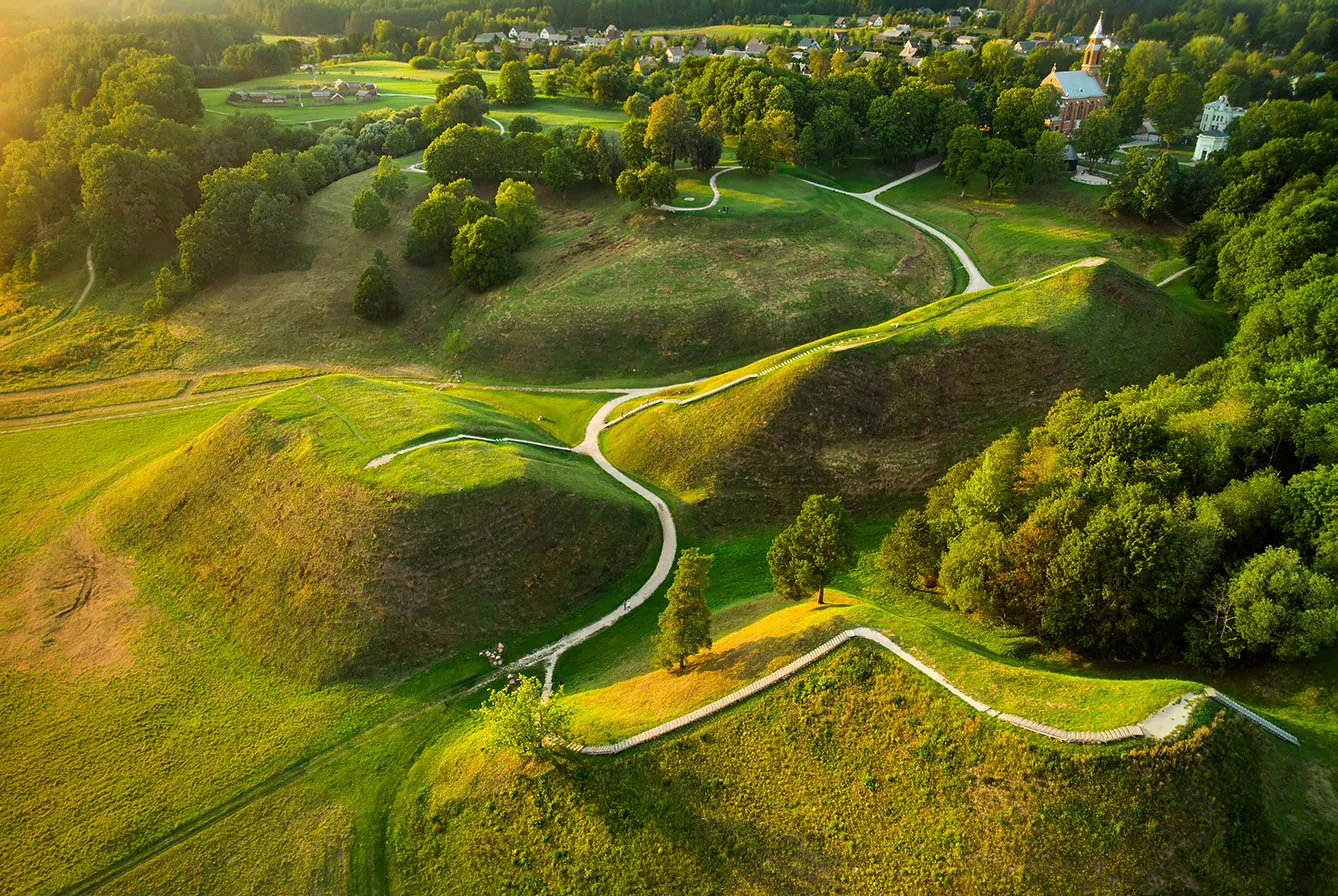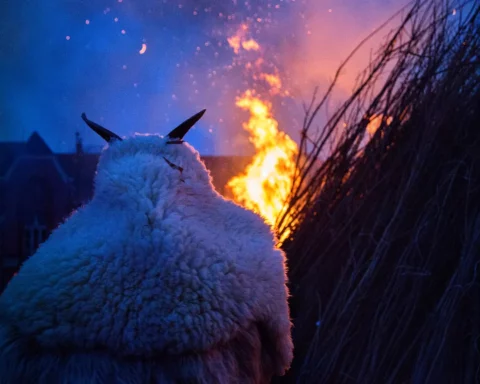That movie is called ‘Attila’ and stars Gerard Butler in the title role. The story follows the king of Huns, Attila, who violently united scattered tribes in an effort to rival Rome’s domination. After successfully establishing an empire of Huns, Ostrogoths, Bulgars, and others, he crossed the Danube twice to take over Constantinople. When he did not manage to overthrow Eastern Roman Empire, he turned his armies towards Rome.
Unexpected parallels
Yet one of the most intriguing features of the film is its location. Almost the entire movie was shot in Lithuania. The medieval town of Kernave became the setting for battles and power struggles. Although it might seem that there was no real connection between Huns and medieval Lithuanians, there are many more parallels than one would expect.
Interestingly, Lithuanian tribes were also unified violently by King Mindaugas in 1253, who saw the rising power of the Teutonic Order on the western borders. Kernave became his capital as well as the first Lithuanian capital. Although Lithuanians never became like Huns on the scale of the invasion, by the year 1400, the lands ruled by Lithuania reached even the Black Sea.
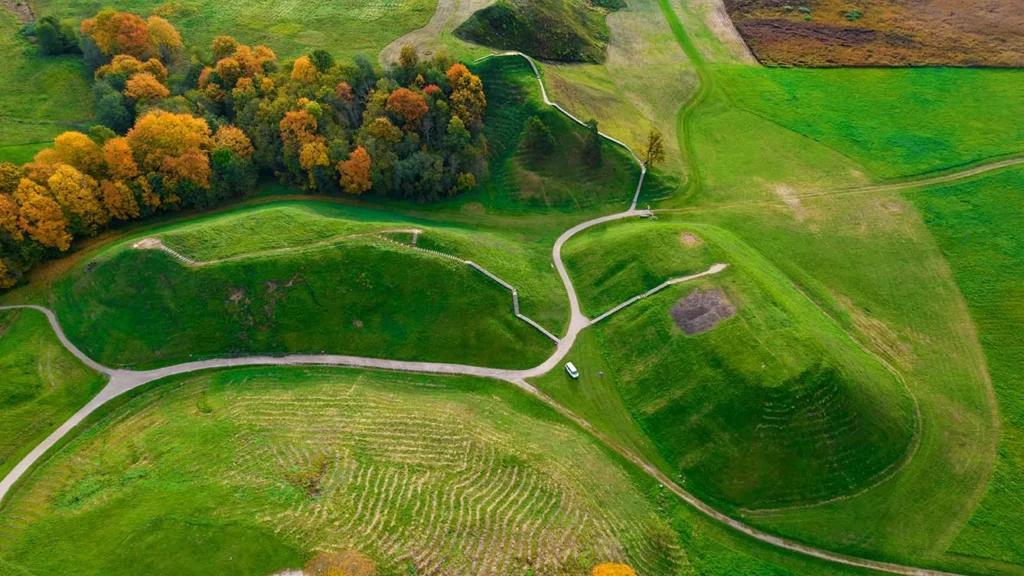
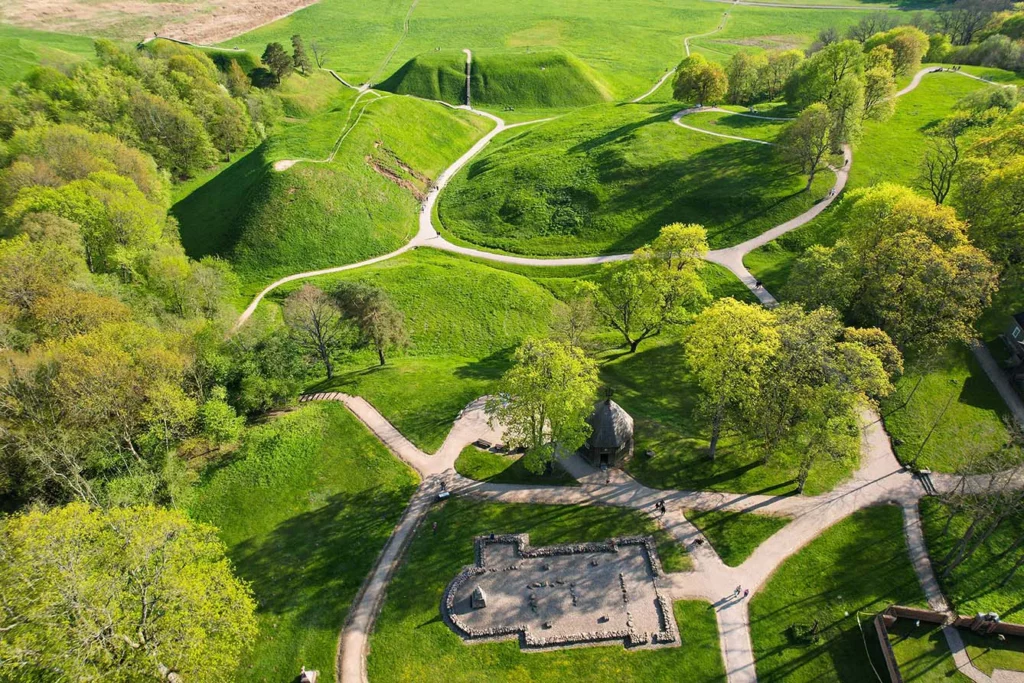
But let’s get back to the town of Kernave itself. In the chronicles of the Grand Duchy, it is stated that Kernave was founded around the year 1040. The most fascinating feature of the location is that it contains a five-hills fortification system, which is half natural and half man-made. The structure of the hills is linked to the surface of the terrain, which used to be a riverbed, but as the river changed its route, it became perfectly suitable for a defensive settlement. The hills reached an average height of 35 m, and each had a different purpose – the residency of the king, the hill of a chief priest, fortified garrison, etc.
A veritable treasure trove
Nevertheless, it was not only a fortification; it was a fully functioning city. Stretching down the hills to the valley and reaching the river Neris, it had a street structure, artisan workshops, marketplaces, and merchants selling goods from even such distant places as Rome. During archeological excavations, Roman coins and glassware, as well as Germanic jewelry, were found. But as the most wanted item in the region was amber from the Baltic Sea, Kernave had to search for other trading options because of its distance from the sea. Thus, fur, wax, honey, and to some accounts, even slaves became a core of the trade.
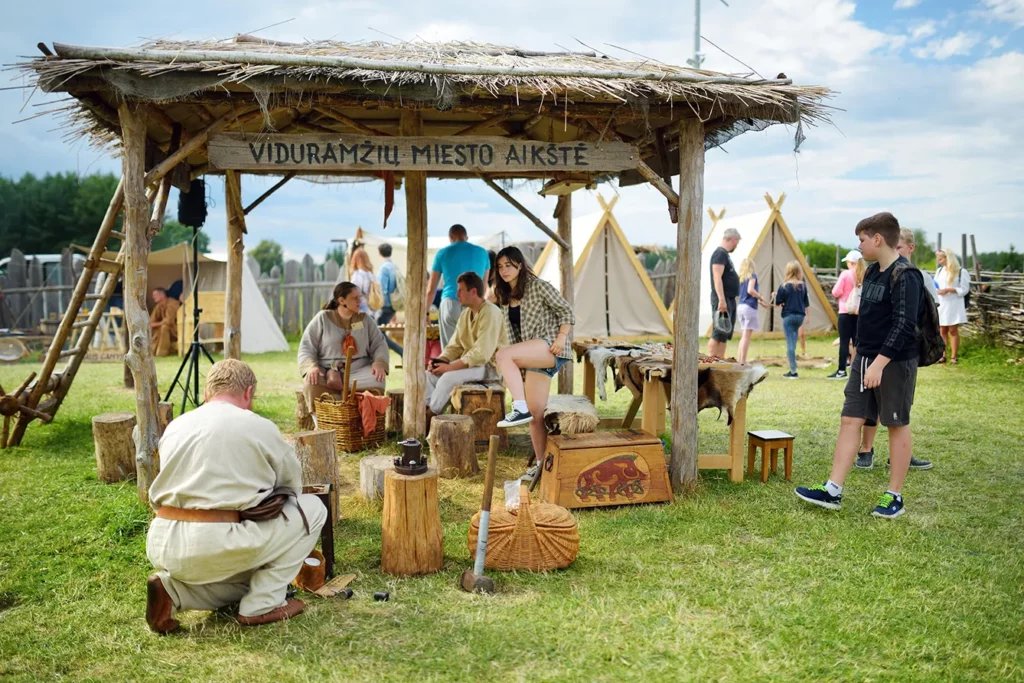
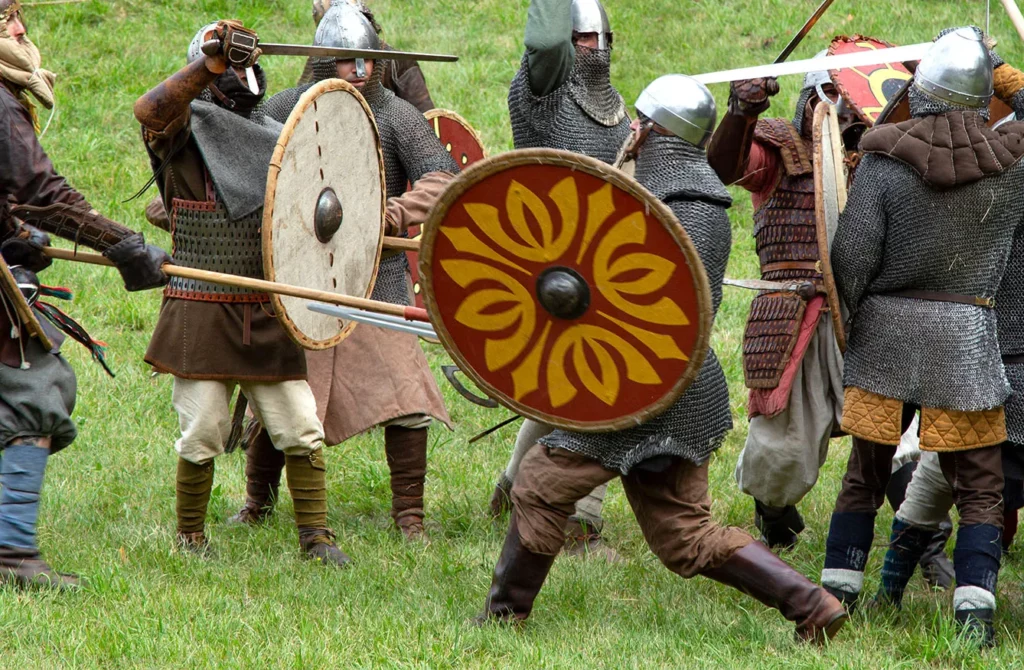
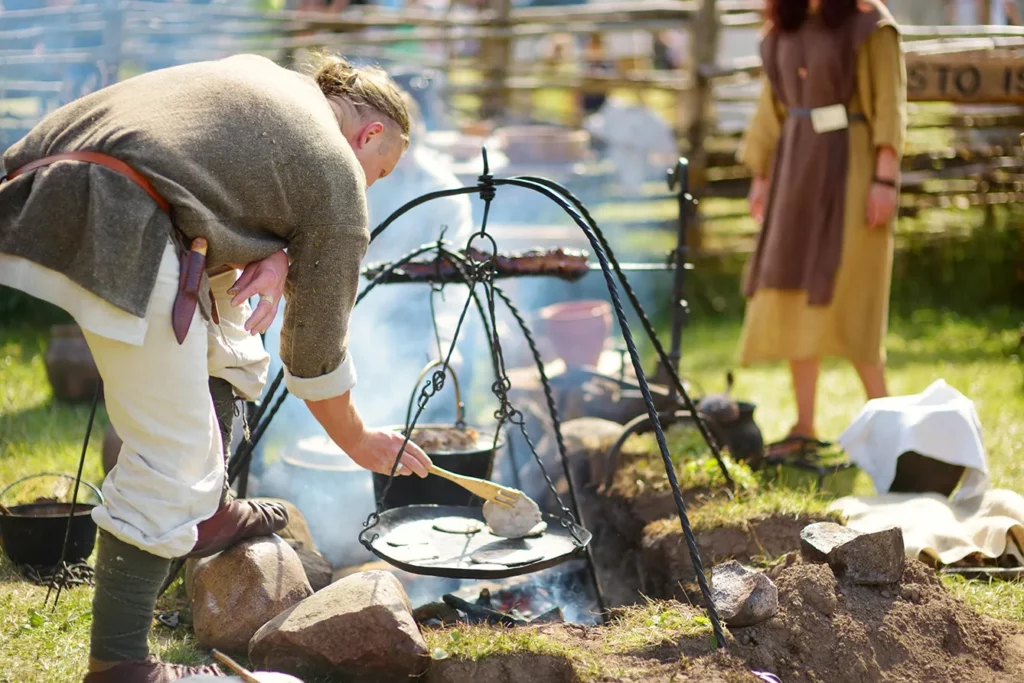
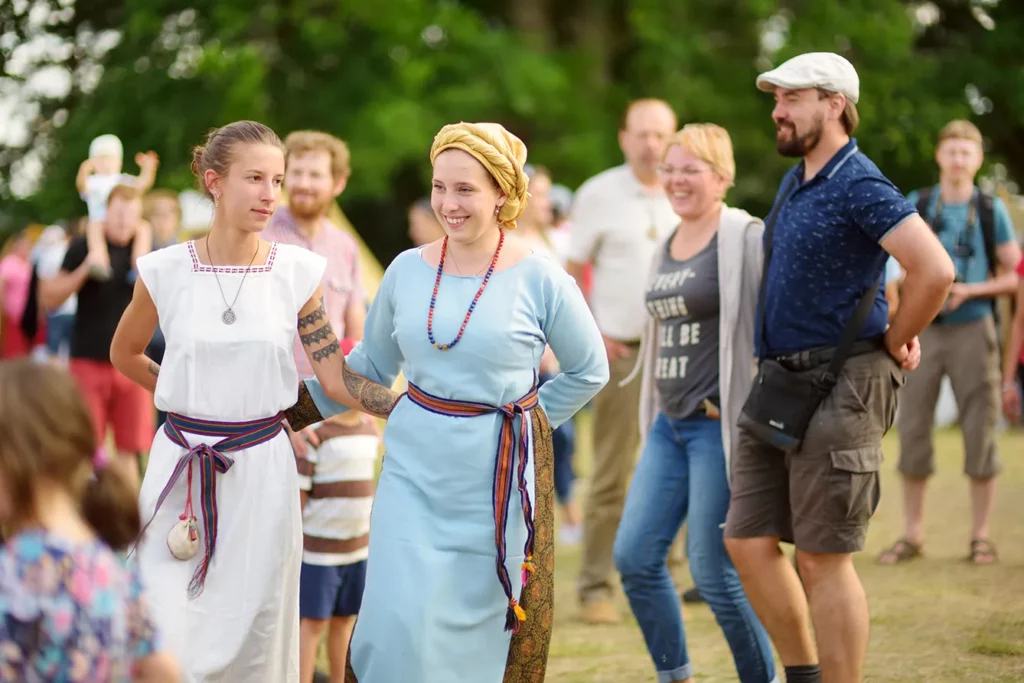
Sadly, the unique story of the first Lithuanian city ended in 1390. In that year, during the invasion of the Teutonic Order, Kernave was burned to the ground as the whole city consisted of only wooden buildings. It never reached its previous state again, although the Grand Duke occasionally used it as a residence. Nonetheless, it became a paradise for archeologists due to the huge fire that ended the city. Precisely because of this, Kernave remained perfectly preserved as it was at exactly that point in time. One could compare it to Pompeii, which retained all of its unique elements exactly as they were when Vesuvius erupted in 79 AD.
In 2004 Kernave became a part of the UNESCO world heritage list. But it is not only historical heritage that is preserved here. Kernave offers many traditions that come to life every summer. At the end of June, the shortest night is celebrated, which entails plenty of pagan traditions, such as jumping over fire and throwing flower wreaths into the river. In addition, in mid-July, the town buzzes with medieval festivities full of knights, tournaments, and craftsmen as the town celebrates the ‘Days of Live Archeology.’


